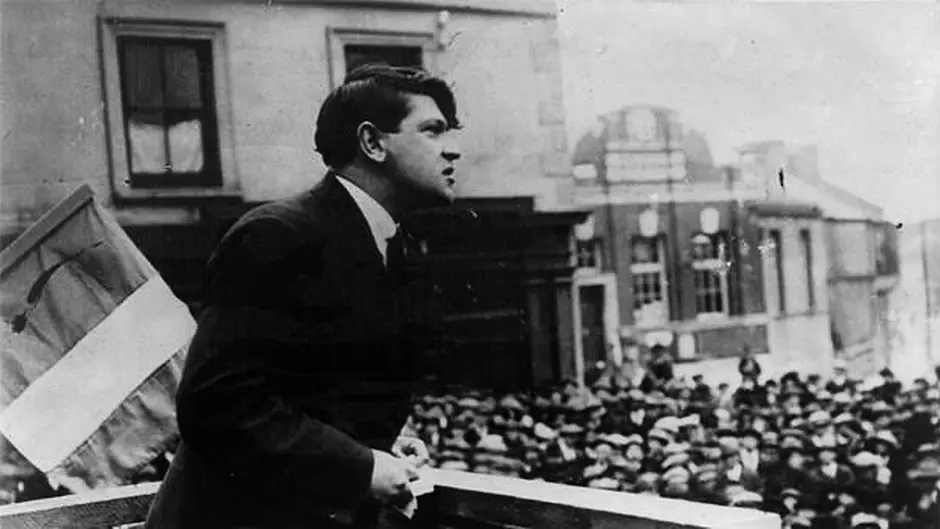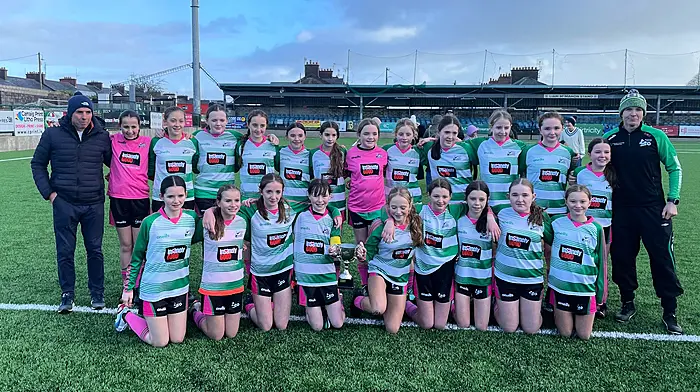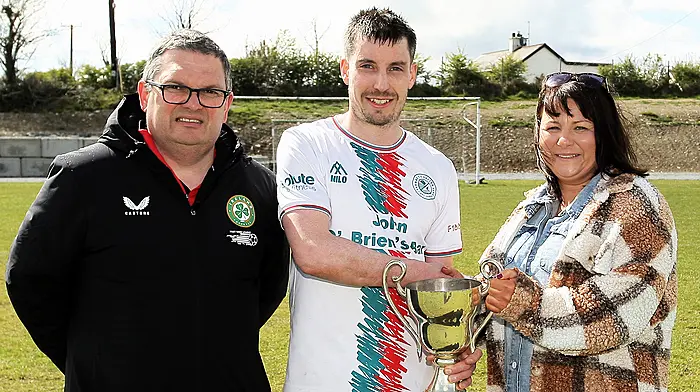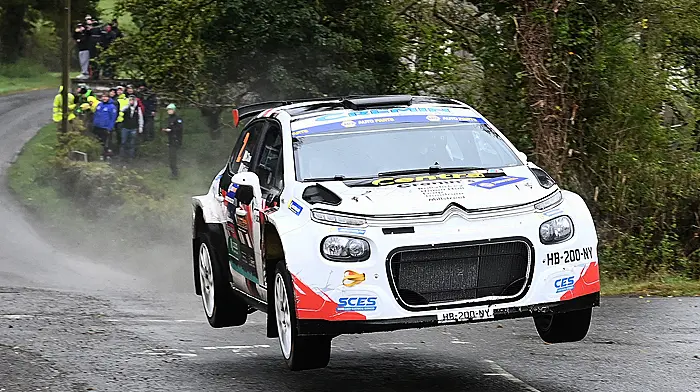This article originally appeared in our special 2022 supplement marking the centenary of Michael Collins' death – read the full supplement via southernstar.ie/epaper.
Author Andrew O’Connor on the complicated webs which the Big Fellow weaved through both his personal and political life.
THAT Michael Collins showed great devotion to his friends and the men and women he led, is in no doubt. He also inspired loyalty and love from those friends. And yet those friendships were rarely straightforward.
Of course, to a great extent the friendships that Collins forged were a casualty of the turbulent times he lived in. As many of his friendships were forged through politics, then politics also played a part in tearing them apart.
The civil war destroyed friendships and families across the country, and Collins was no exception to that. But other factors also played their part in stretching and straining those friendships to breaking point.
Collins appears to be a complicated individual, fiercely loyal and yet could be seen as being somewhat careless with other people’s emotions.
And, of course, as Collins rose up to the top of Irish politics this, too, affected his friendships, bringing insecurities and jealousies from those around him.
The nature of Eamonn de Valera and Collins’s relationship could perhaps be described as an example of ‘frenemies’. Brought together because of the fight for Irish independence, they most probably otherwise would never have made an acquaintance.
Their personalities were starkly different. Collins was passionate, emotional and excitable, while de Valera was a steady, reserved, methodical character.
Yet they initially worked very well together – perhaps their differences complimenting each other. This was spectacularly illustrated when the two plotted to spring de Valera from Lincoln Jail.
Collins was even waiting in a car on the night of the escape, outside the prison to smuggle de Valera to safety. De Valera then stowed away to America for eighteen months to raise funds and gather support for Irish independence.
During this time, de Valera’s wife Sinead and their children remained at home in Greystones and each week Collins paid the family a visit. During these visits Collins brought money and support to the family, often being seen playing with the de Valera children.
It sounds the stuff of unbreakable, lifelong friendship. And yet their bond was shattered within a couple of years.
As mentioned previously, politics obviously played its part in driving a wedge between the two men. Collins supported the Treaty, de Valera did not. But also, when de Valera returned from America, he must have been stunned to see the fame and popularity that Collins had achieved.
Suddenly, de Valera was overshadowed by a charismatic character such as Collins. He handed Collins the poisoned chalice of going to London as part of the negotiating delegation.
When Collins signed the Treaty, he admitted it was akin to signing his own political death warrant. If they were frenemies, then de Valera would appear to have been the victor, insofar as he was the one who had the political career that survived for decades that shaped Ireland.
But despite Collins career and life being cut short, de Valera never quite escaped the shadow of his former friend as shown when he said: ‘It is my considered opinion that in the fullness of time, history will record the greatness of Collins and it will be recorded at my expense.’
Collins’ time in London during the Treaty negotiations saw him making some new, unexpected friendships and also cementing some old ones.
Collins stayed with members of his team in a house in Cadogan Square during the negotiations. There was very much a policy of ‘work hard and play hard’ at the house.
Collins obviously knew his team were under tremendous pressure, so he encouraged them to let off steam during the evenings. He made sure his men and secretaries were fed well, ordering food from Harrods and also there were stories of music and dancing in the house at night.
Again, it showed the human side of Collins that he liked to see people he cared about looked after and enjoying themselves. But Collins did not just confine himself to the house in Cadogan Square for his social life while in London.
The celebrated portrait artist Sir John Lavery had requested to paint the delegates for posterity.
Sir John was married to Lady Hazel Lavery, who was considered to be the most famous and beautiful society hostess in London. When Collins arrived at the Laverys’ mansion in Kensington to have his portrait painted, he immediately hit it off with the couple.
In a very short space of time Collins became very good friends with the Laverys to such an extent that there were rumours about the nature of his relationship with Hazel.
 Complicated trio: Harry Boland, Michael and Éamon de Valera.
Complicated trio: Harry Boland, Michael and Éamon de Valera.
Collins’ friendship with the Laverys shows a very different side to him that was not obvious before. They introduced Collins to high society and he found himself in the company of people like George Bernard Shaw and the author of Peter Pan, JM Barrie.
Perhaps people who had known Collins back in Ireland would find it hard to believe that he found himself mixing in this company. It shows that Collins’ personality was not narrow, but was open to meeting people from very different backgrounds from his own. It also shows a growing confidence that he could not only hold his own in any social situation, but could charm those present also.
Another great friendship of Collins’s that came crashing down around him was the one he had with Harry Boland.
While Collins and de Valera were polar opposites, Collins and Boland were extremely well-matched with their personalities. Again, politics was what the friendship was forged on and politics was what appeared to destroy it. Boland also did not support the Treaty and subsequently was on the opposing side of the civil war from Collins.
But with this friendship, affairs of the heart also played a role in driving the two men apart.
Both were in love with the same woman – Kitty Kiernan, the well-heeled daughter of a business family from Co Longford. They had both met Kitty while staying at her family’s hotel while campaigning for the 1918 general election.
It was Harry who was originally smitten with Kitty, and they began ‘courting’. But then Harry had to spend months away in America supporting de Valera.
During Harry’s time away, Collins and Kitty became close.
When Harry returned, he found his sweetheart was now involved with his best friend. Collins obviously could not help himself from falling in love, but it is an interesting aspect of his personality that he did not consider his best friend’s ‘girl’ off limits.
It does also indicate another side to the friendship Collins and Boland had. There appears to have been a certain level of competitiveness between the two men. When Boland returned from America and found his girlfriend and best friend had formed a liaison, his reaction was unusual. He did not hit the roof or fire accusations at either of them.
Instead, he seemed to think that Kitty was still committed to him and that they would end up marrying in the end. In fact, Boland spent the night before his return to America with Collins in Dublin and told him that Kitty had agreed to marry him.
Whether this was wishful thinking, delusion, or a final attempt to push Collins out of the picture with Kitty, is unknown. It is poignant that this is the last time Collins and Boland spent time
together as friends. Within a short period, Collins and Kitty were engaged and then he went to London to negotiate the Treaty.
By January 1922 Boland was back in Ireland and declared his opposition to the Treaty, putting the former friends on opposite sides of what would be a very bloody battle.
Historians have made mention that what had happened in their personal lives must have had some impact on Boland and his politics during the civil war. Tragically, it was a war that would cost both former best friends their lives.
Friendships certainly played a big part in Michael Collins’ life. Those friendships were as diverse as they were interesting, and still fascinate us a century after his death.








